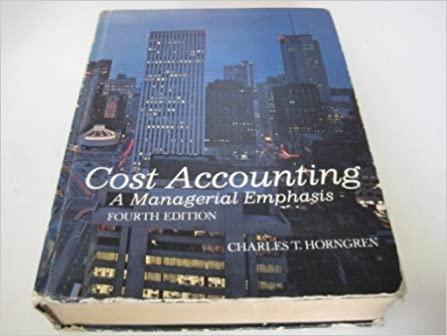Review of Chapters 8 and9 (H. Schaefer) The manager of the Victory Divi- sion received the following
Question:
Review of Chapters 8 and9 (H. Schaefer) The manager of the Victory Divi- sion received the following report for the year 19_4:
Sales (100,000 units) $3,000,000 Manufacturing cost of sales (at standard)
Beginning inventory (10,000 units) $ 270,000 Production (150,000 units) 4,050,000 Available for sale (160,000 units) $4,320,000 Ending inventory (60,000 units) 1,620,000 2,700,000 Gross margin before variances $ 300,000 Manufacturing variances—favorable 50,000 Gross margin $ 350,000 Nonmanufacturing expenses 150,000 Net income $ 200,000 Note A: Manufacturing costs incurred during 19_4:
Material $ 760,000 Labor 1,525,000 Overhead 1,715,000 $4,000,000 Note B: Standard manufacturing costs per unit:
Material $ 5.00 Labor 10.00 Overhead 12.00 $27.00 The overhead cost is based upon an annual denominator activity of 110,000 units and annual fixed costs of $330,000.
The division manager is delighted with the income number—but suspicious.
In 19_3 he also sold 100,000 units but produced only 110,000 units and had a much lower income number. He asks you to do some “costly” analysis.
First, he wants to know more about the $50,000 favorable variance in manufacturing costs. How much is attributable to material? Labor? Overhead?
Did it result from spending less?
Second, he wants to know why 19_4 is better than 19_3—aside from possible differences in efficiency and input prices. That is, for this part assume that there were zero price and efficiency variances for both 19_3 and 19_4. Compute the difference between 19_3 and 19_4 net income. Give a specific explanation of why it occurred.
Step by Step Answer:






